The new Specialized Tarmac 2018 is more than a completely redesigned road bike. We tested the bike in the USA and here are our first impressions. Not happy with just knowing about the 2018 model, we also cheekily asked what can be expected from the Tarmac 2020. Mark Cote, Specialized CMO, gives a glance into the future of road bike development.
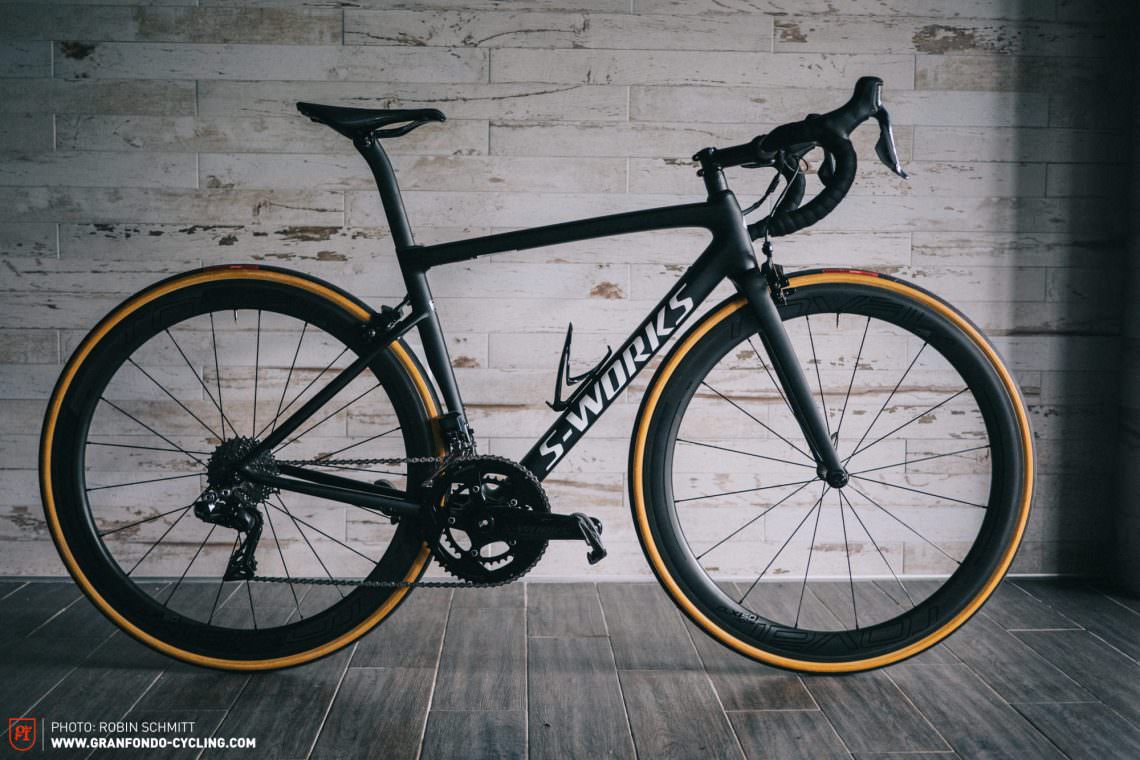
If you want to create a fast bike today, you will not only have to find an optimal balance between aerodynamics, weight and comfort, but also harmonize this with the handling. Because a bike is only as good as it can be ridden. For the new Tarmac, Specalized have pulled out the stops and created a bike that is supposed to be 45 seconds faster over 40 km, 200 g lighter and more comfortable than the previous model. Marketing or reality?

The Specialized Tarmac S-Works Ultralight 2018: weight, features, details
With an extremely complex development effort including flow and strength simulations (FEA and CFD) as well as wind tunnel testing (Specialized have their own) for all of the seven frame sizes. Specialized wanted to achieve the characteristics mentioned above. In the following we look at the features of the new Tarmac:
Rider-First Engineered & Improved Aerodynamics
Visually, the bike does not immediately scream aero. But on second glance you can see various analogies, for example, to the Venge ViAS. Equally, the Rider-First Engineered principle has been brought to the next level by optimizing the frames, as well as the forks on the different frame sizes, in order to keep aerodynamics, weight, comfort and stiffness – i.e. overall performance – constant.

Specialized now also extends its Rider-First-Engineered approach to the forks. Depending on the frame size, a different fork is used. In total, there are three different forks that are visually different in size in order to minimize the frontal profile as much as possible and that they meet the different requirements in terms of stiffness.
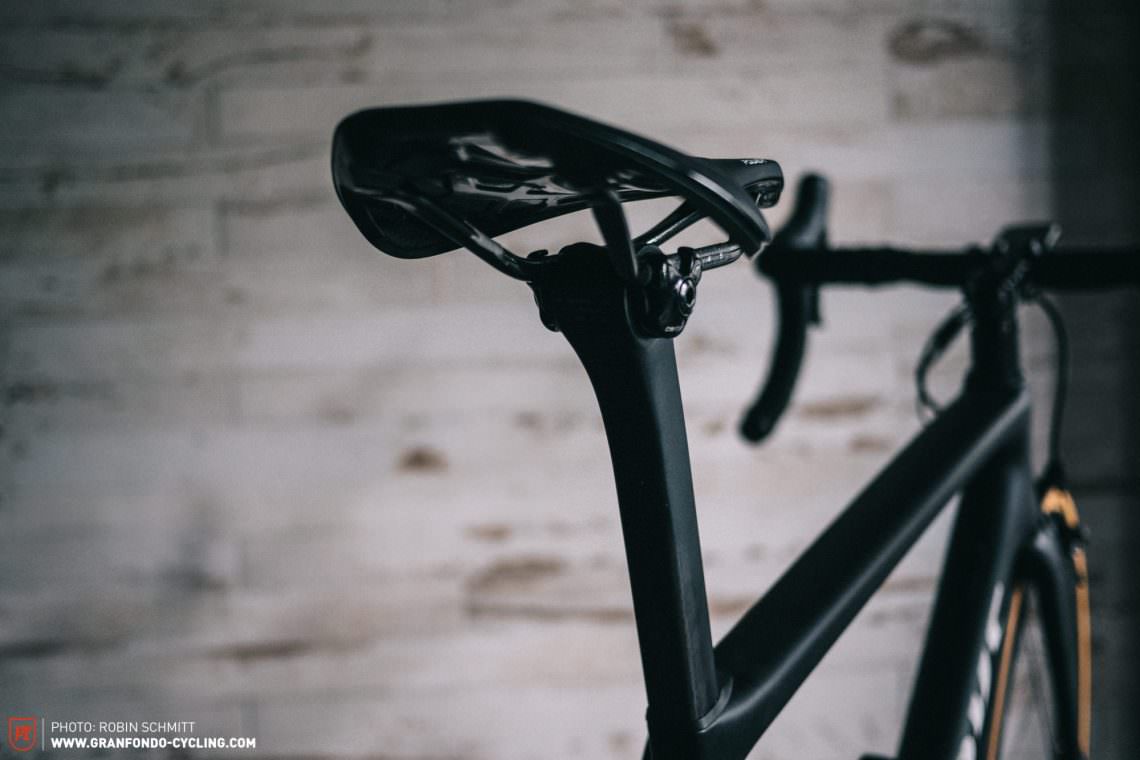
The D profile of the seat post and the seat tube are supposed to offer significant aerodynamic advantages whilst offering a higher comfort than the previous model.
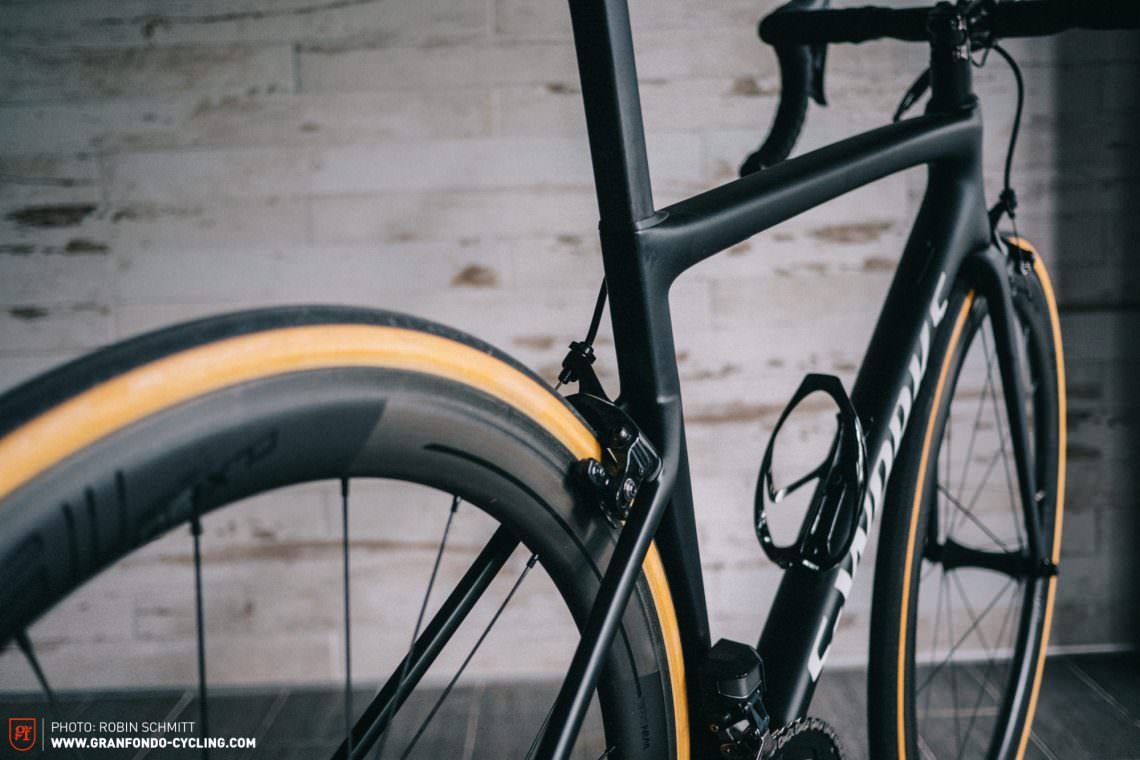
The dropped seatstays might look familiar from the Venge ViAS, Roubaix and even Allez and Allez Sprint. They are supposed to significantly improve the aerodynamics and are now being implemented in the new Tarmac.
Aero for free?
According to Specialized the goal of the development was to add aero advantages without sacrificing any of the essential Tarmac qualities. This meant, that they would stop increasing aero characteristics on the bike if it meant compromising on weight or stiffness.
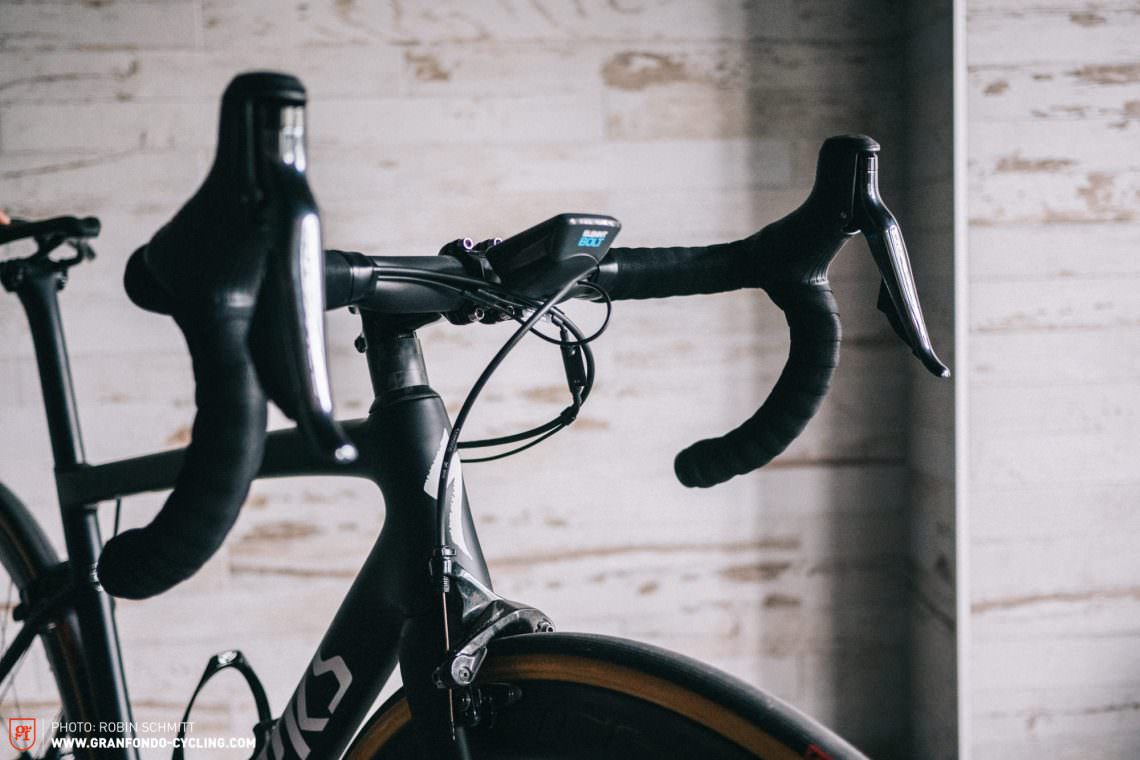
Weight Specialized Tarmac S-Works Ultralight 2018
The Specialized Tarmac S-Works Ultralight 2018, which we tested, weighed in at 6.30 kg in size 56 cm. Making the carbon layup more precisely and optimizing the manufacturing process also helped to further reduce weight. The number of individual carbon pieces for a Tarmac frame has grown from 350 to around 500 individual parts. In addition, the S-Works Ultralight uses a special paint that weighs only 10 g (!). The result is a 733 g frame in size 56 cm.
Further details and features
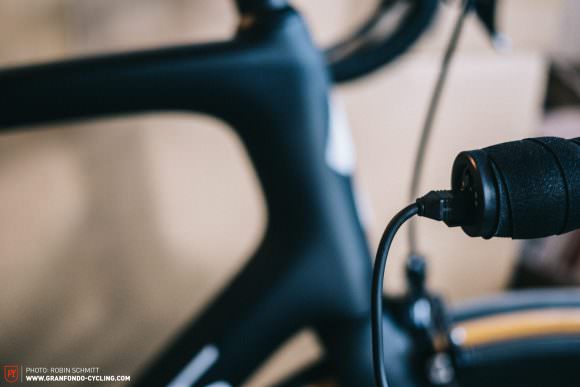
The Junction Box of the Shimano Dura Ace Di2 drivetrain is located in the drops of the handlebar and provides a much tidier look.
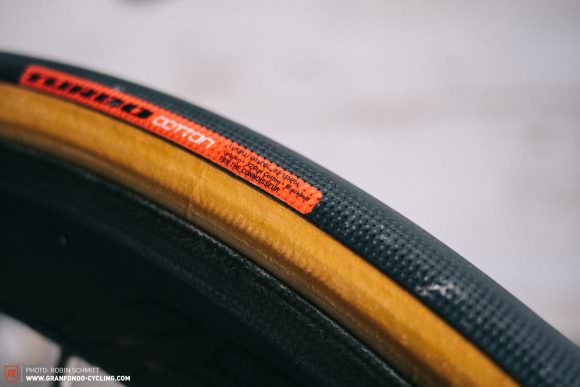
The Specialized Turbo Cotton in 26 mm width.
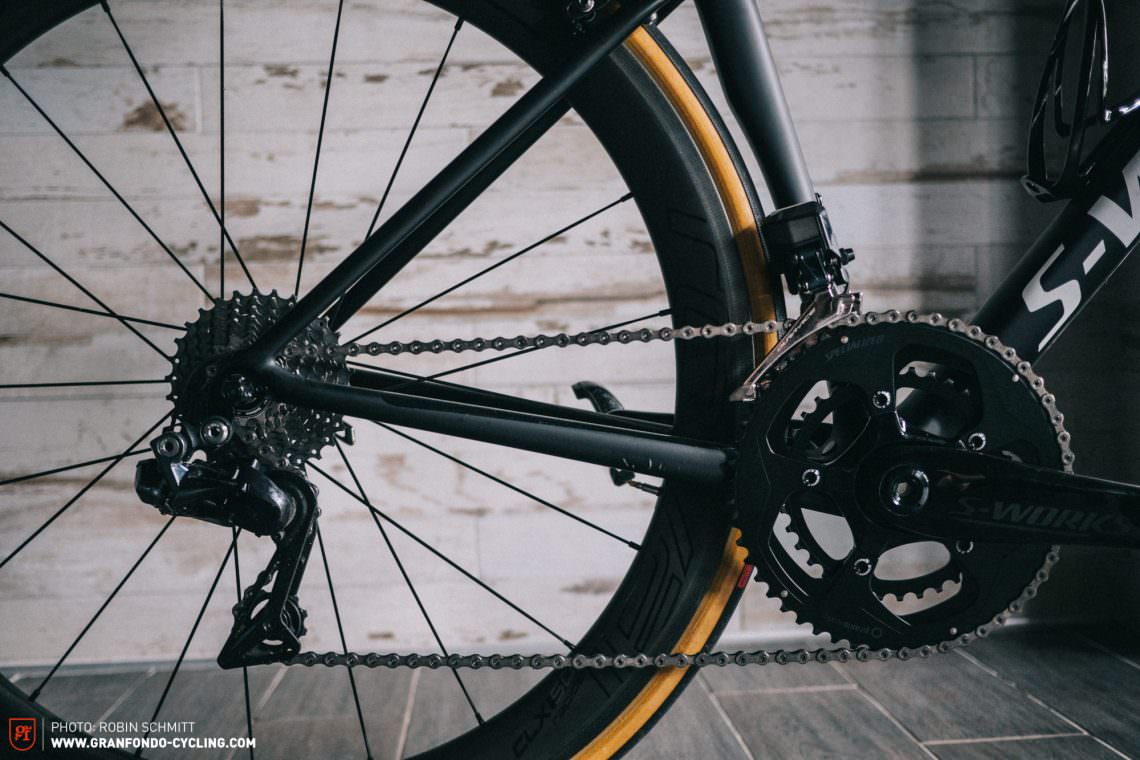
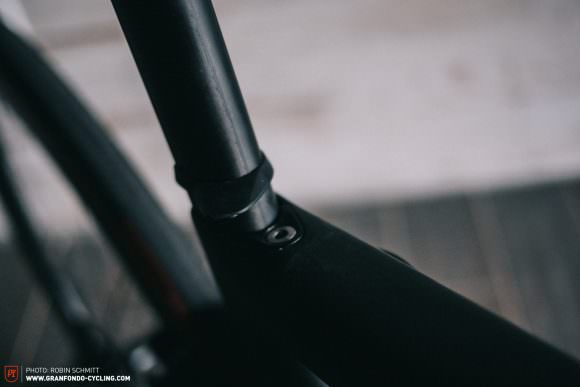
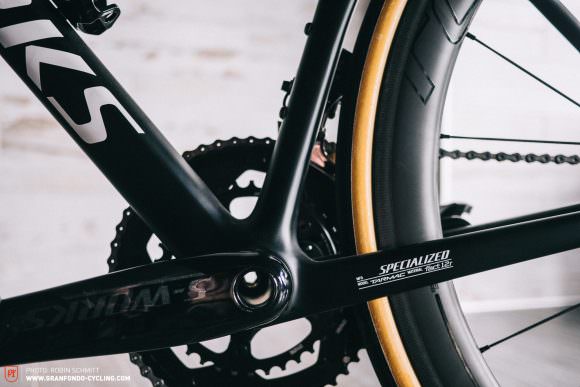
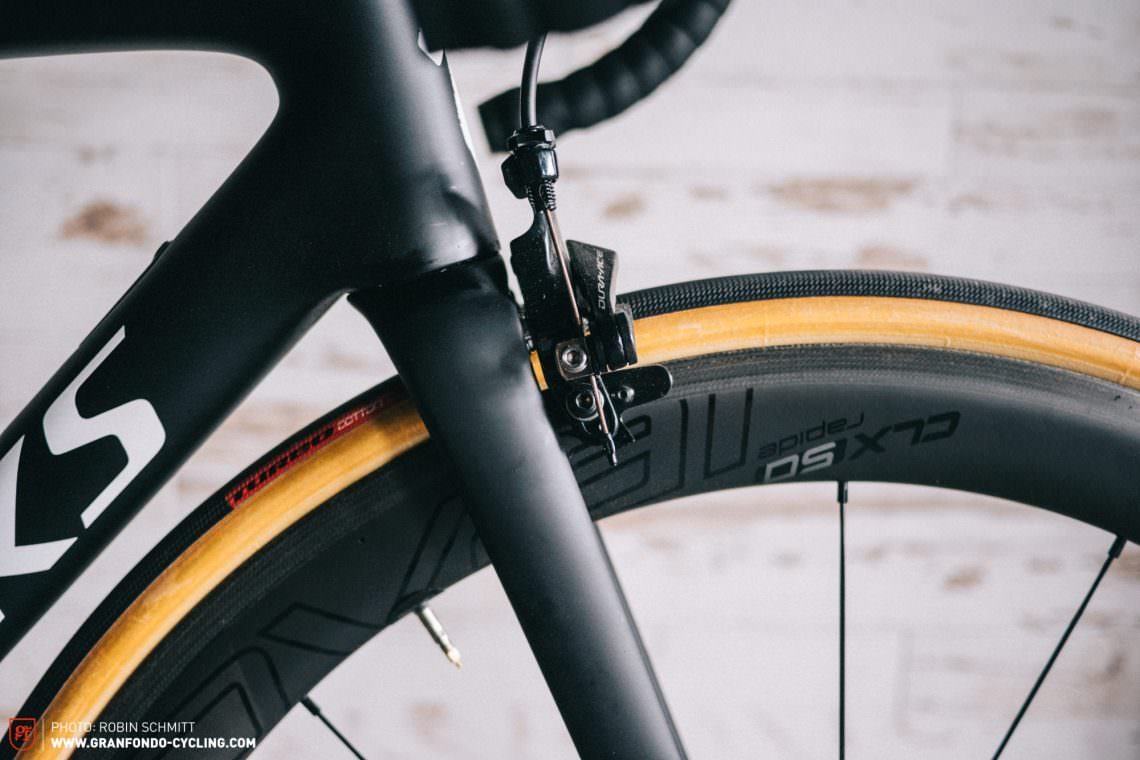
Specialized Tarmac 2018: Models, Prices
We still haven’t received the full model range of the new Tarmac; please be aware that pricing might differ depending on country.
Specialized Tarmac S-Works Ultralight
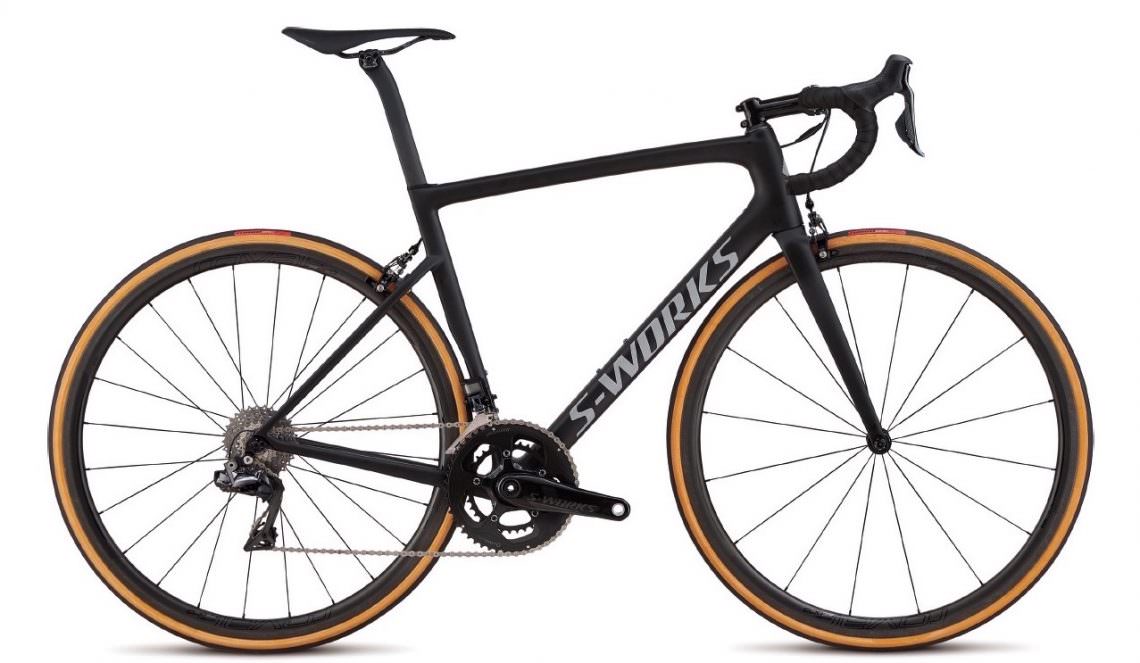
Drivetrain Shimano Dura-Ace Di2 9150 11-speed
Wheels Roval CLX 32
Brakes eecycleworks eebrake
Tires Turbo Cotton 700×26 mm
Cranks S-Works carbon fiber
Price 9999 €
Specialized Tarmac S-Works
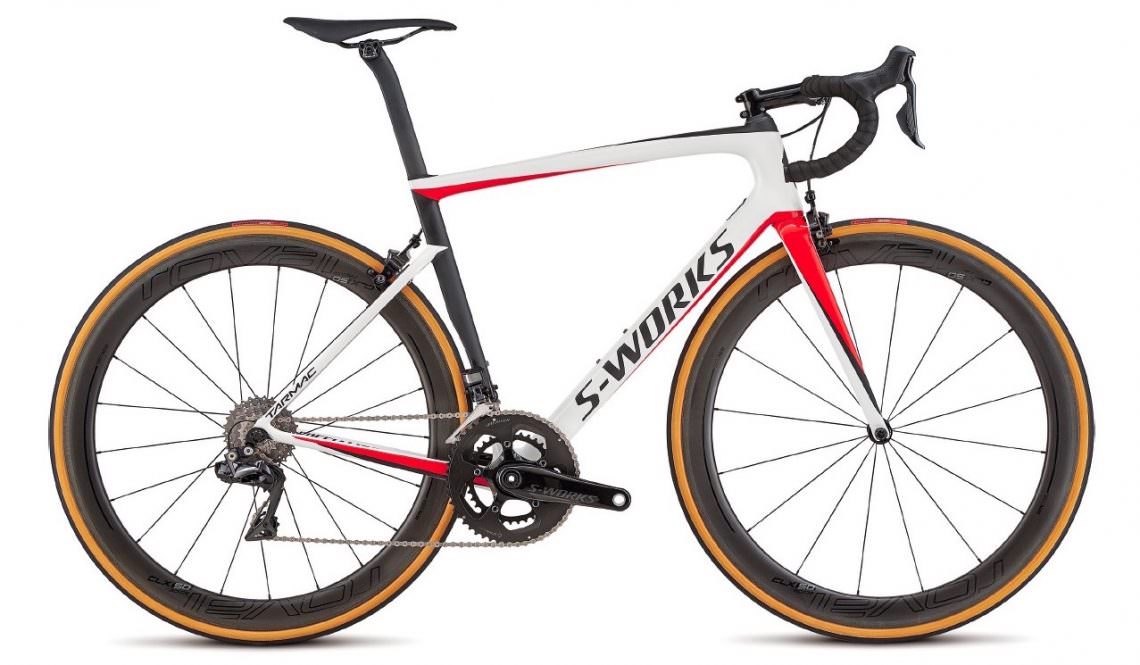
Drivetrain Shimano Dura-Ace Di2 9150 11-speed
Wheels Roval CLX 50
Brakes Shimano Dura-Ace 9110F
Tires Turbo Cotton 700×26 mm
Cranks S-Works carbon fiber
Price 9499 €
Specialized Tarmac Sport
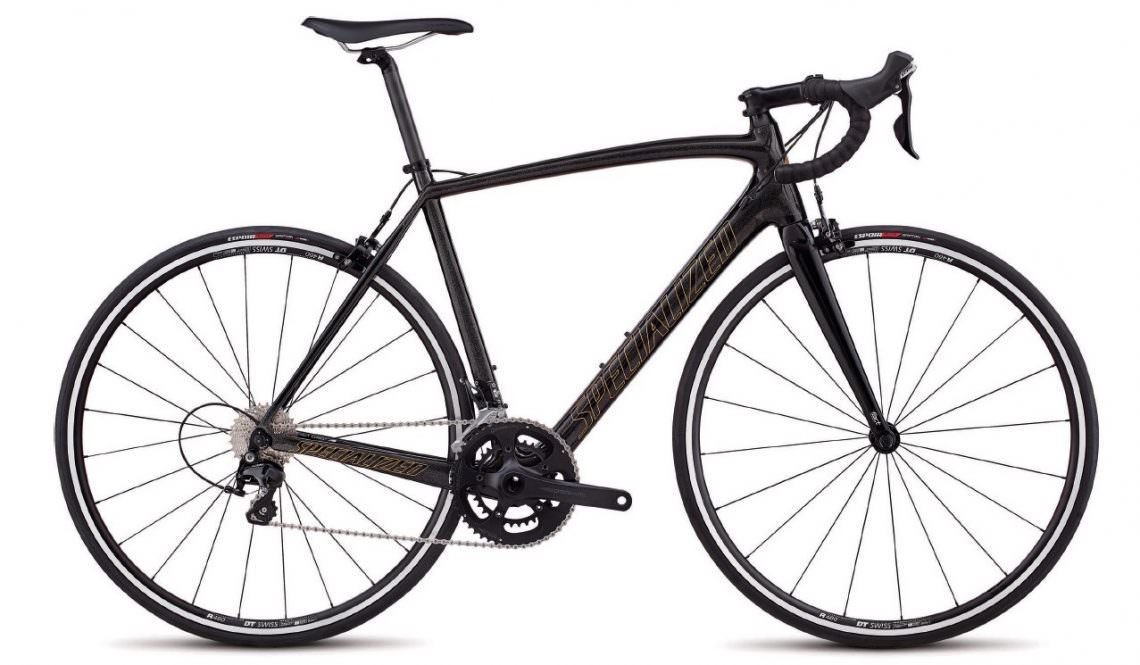
Drivetrain Shimano 105 11-speed
Wheels DT R460
Brakes Axis
Tires Espoir Elite 700×23 mm
Cranks Praxis Alba M30
Price 1899 €
Specialized Tarmac S-Works Ultralight: Geometry
| Size | 49 | 52 | 54 | 56 | 58 | 61 |
|---|---|---|---|---|---|---|
| Seat tube | 431 mm | 462 mm | 481 mm | 501 mm | 522 mm | 553 mm |
| Top tube | 508 mm | 531 mm | 540 mm | 562 mm | 577 mm | 595 mm |
| Head tube | 115 mm | 126 mm | 143 mm | 163 mm | 190 mm | 210 mm |
| Head angle | 71,75 ° | 72,5 ° | 73,0 ° | 73,5 ° | 73,5 ° | 74,0 ° |
| Seat angle | 75,5 ° | 74,0 ° | 74,0 ° | 73,5 ° | 73,5 ° | 73,0 ° |
| Chainstays | 405 mm | 405 mm | 405 mm | 405 mm | 407 mm | 410 mm |
| BB Drop | 74 mm | 74 mm | 72 mm | 72 mm | 72 mm | 72 mm |
| Reach | 375 mm | 380 mm | 384 mm | 395 mm | 402 mm | 408 mm |
| Stack | 514 mm | 527 mm | 544 mm | 565 mm | 591 mm | 612 mm |
First Ride Review: Specialized Tarmac S-Works Ultralight 2018
Our S-Works Ultralight test bike weighed in exactly at an impressive 6.30 kg. However, evaluating the bike purely on its weight would be completely wrong.


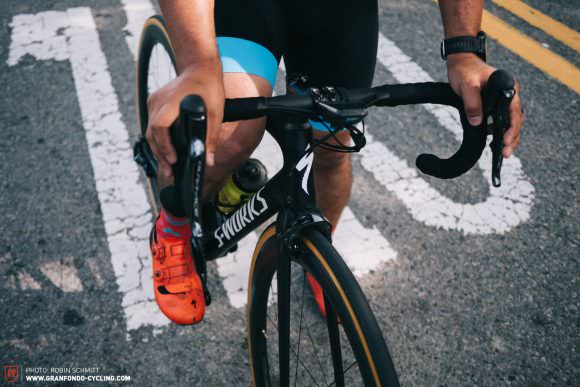
The clear design language and lightweight paint job make for a great first impression, which thankfully translates to the road. When accelerating, the bike is super stiff and efficiently sprints forward on its fast-rolling 26 mm tires. Quickly you notice: This bike is fast, damn fast! The aero-optimizations are used to their full effect!

But even more impressive than the light-footedness of the bike was the riding stability and the feeling of safety. Whether at 40 km / h on the flat, slowly uphill or in the aero tuck position with maximum speed pointing downhill, the bike radiates a confidence-inspiring composure and always remains calculable and steady-running without compromising on agility. On the contrary, steering pulses are very precise and direct and the bike actually feels more lively and agile than the previous model. We are absolutely thrilled!
The Tarmac – a visionary bike?
We spoke with Mark Cote, CMO of Specialized about the highlights of the new Tarmac and the future of the road bike. And on this occasion we caught him off guard and asked him about what the next Tarmac will look like 😉
What’s next? Considering the new Tarmac’s superb performance we wonder whether the next Tarmac generation (yes, we are thinking far ahead!) will be even lighter, stiffer and more comfortable? Well, you’ll have to watch the video above to find out what Mark tells us. But regardless of what is happening, the new Tarmac has already revealed three major trends that will play a big role in the development of future road bikes:
1. The specialists are dead.
Nowadays it is no longer enough to focus the development of a bike on select parameters. A fast bike must be able to be more than just light or aerodynamic. The total package is what counts and makes the difference to the consumer.
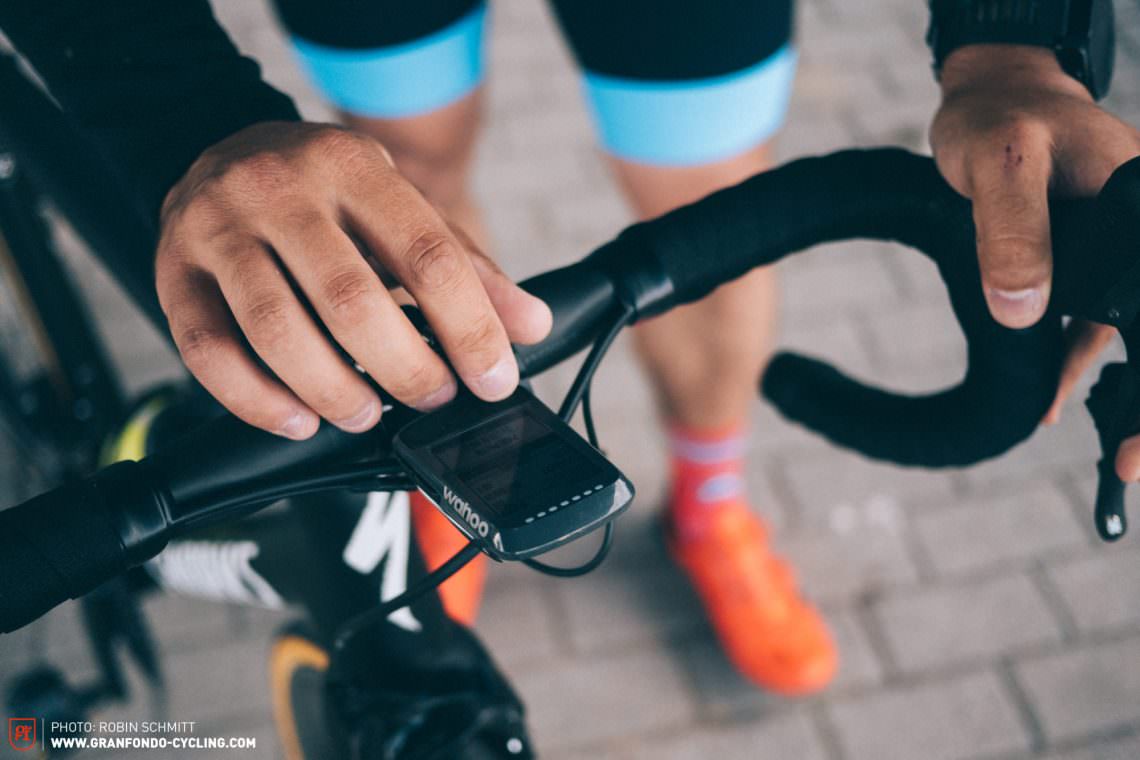

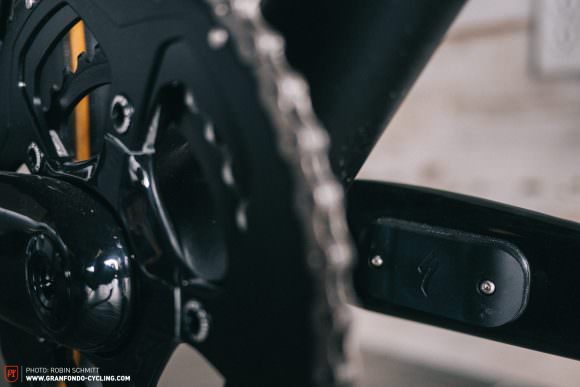
2. Big Data
Specialized sits alongside companies like Facebook or Google in Silicon Valley. Maybe this is why it is not a crazy surprise that real world data will be a big topic. In the e-bike sector, Specialized have collected data from more than 3 million (!) trail kilometers of their users thanks to the Mission Control app. It’s obvious that this data, which is generated by the end user, is an extreme advantage in knowledge when making new developments. Whoever understands their customers and knows how they actually use the products will be able to develop better products. The new S-Works Power Cranks, or more precisely, Specialized’s new proprietary power meter might be a first step in this direction.
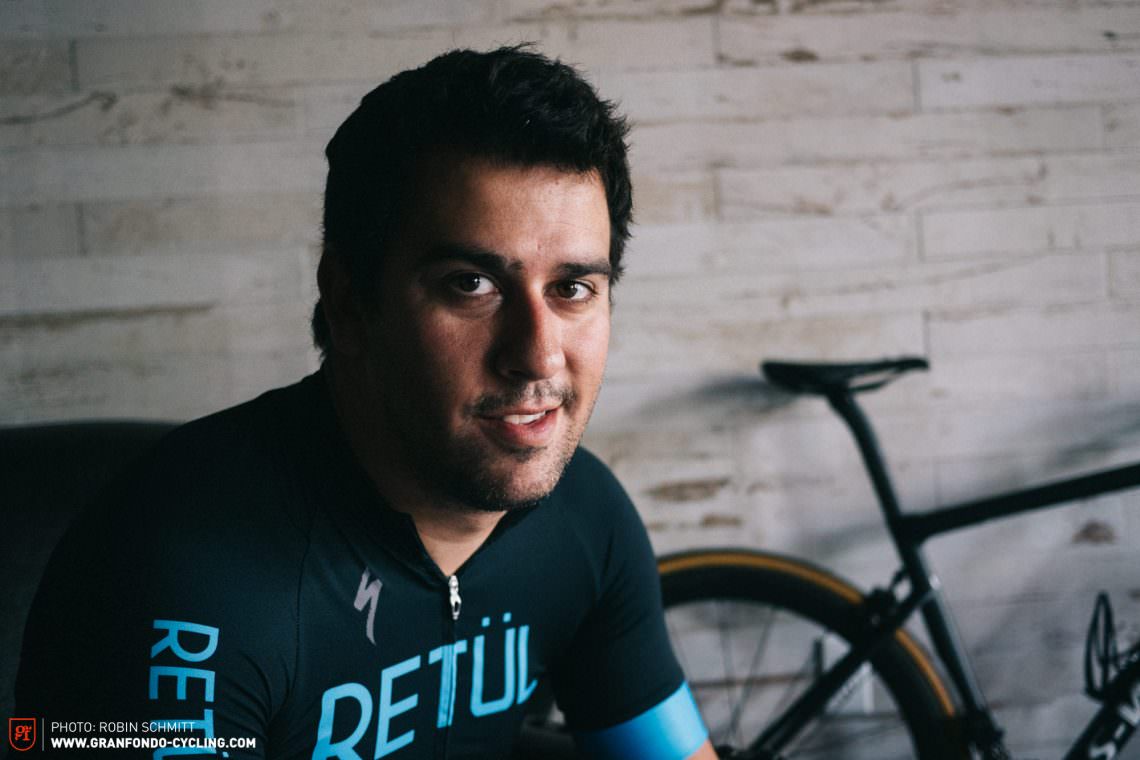
3. Bike Fitting
Man-machine compatibility is becoming increasingly important. A bike can perform well in the laboratory, but if the rider can not use the theoretical advantages or handle the bike, then theoretically a good bike is a bad bike. For Specialized, Retül is now an important part of their development process. Each fitting is incorporated into a database for the collection of real rider data. In this way, Specialized can better understand exactly how the riders are positioned on the bike, and these findings can be incorporated into geometry as well as component selection.
From the data of more than 40,000 Retül digital fit points, Specialized have also changed their approach to women-specific bikes. From now on, both women’s and men’s models share the same frame and geometry.

Conclusion
With the new Specialized Tarmac S-Works Ultralight 2018, the California-based company has created an outstanding bike with an outstanding overall concept. First-class riding characteristics, a stringent design and a lot of sex appeal. On top of that they’ve provided us with an exciting vision of the future of road bikes. Specialized, shut up and take our money!
More information: specialized.com
Did you enjoy this article? If so, we would be stoked if you decide to support us with a monthly contribution. By becoming a supporter of GRAN FONDO, you will help secure a sustainable future for high-quality cycling journalism. Click here to learn more.
Words & Photos: Robin Schmitt






